Exploring the Depths of Green Goblin Comics
Intro
The realm of comic books is rich with characters that span the spectrum of heroism and villainy. Among them, the Green Goblin stands as one of the most complex figures in comic history. His association with Spider-Man is fraught with drama, psychological tension, and moral ambiguity. This analysis aims to unpack the intricacies of Green Goblin's character development and his pivotal role in the Spider-Man narrative.
Spider-Man Character Analysis
Background
Spider-Man, created by Stan Lee and Steve Ditko, made his first appearance in 1962. He was born Peter Parker, an ordinary teenager who gained superpowers after being bitten by a radioactive spider. Spider-Man embodies the struggles of a young adult learning responsibility while managing his powers. His character evolves through the trials he faces, becoming one of the most celebrated superheroes in comic book history.
Powers and Abilities
Peter Parker possesses a variety of unique abilities. His superhuman strength, agility, and reflexes give him an edge in combat. Additionally, he has the ability to cling to surfaces and a sixth sense—referred to as his "Spider-Sense"—which alerts him to danger. This combination of powers sets the stage for the dynamic confrontations he faces, particularly against villains like the Green Goblin.
Character Development
Spider-Man's growth as a character is profoundly shaped by his relationships with various foes, especially the Green Goblin. The ongoing conflict between them explores themes of revenge, betrayal, and personal loss. Key moments in Spider-Man's journey include:
- The death of Gwen Stacy, influenced strongly by Green Goblin's actions.
- The intense psychological battles that reveal the vulnerabilities of both characters.
- Instances where Spider-Man must confront his own moral dilemmas in the pursuit of justice.
"The Green Goblin serves not only as Spider-Man's antagonist, but as a reflection of Peter Parker’s fears and failures."
Green Goblin: The Arch-Nemesis
Origins and Motivation
The Green Goblin, primarily associated with Norman Osborn, emerged as a formidable enemy for Spider-Man. Osborn’s transformation into the Goblin is a product of both personal failure and external influences, such as exposure to an unstable formula. His motivations often stem from a desire for power, revenge against Spider-Man, and a twisted form of love for his son, Harry. This complexity adds layers to his character, making him more than just a typical villain.
Character Arc and Evolution
The Green Goblin has undergone multiple iterations throughout the years. Original depictions painted him as a tragic figure, driven mad by his own ambition. Later incarnations explored different facets of his psyche, such as insanity and greed, shaping the audience’s perception over decades.
Finale
The dynamic between Spider-Man and the Green Goblin highlights the depth of comic book storytelling. From their first encounter, the impact of this rivalry resonates through the narrative, influencing story arcs and character developments not just for Peter Parker, but within the entire Marvel Universe. This analysis aims to provide context for understanding the significance of the Green Goblin in shaping comic book history and his prevalent themes in contemporary storytelling.
Prelude to Green Goblin
The character of Green Goblin serves as one of the most important antagonists in the Spider-Man universe. His presence not only introduces significant challenges for Spider-Man but also enriches the narrative with deeper themes of duality, power, and the human psyche. Within this section, we will explore the significance of the Green Goblin, particularly emphasizing how his origins reflect the complexities of hero-villain relationships.
Origins of the Character
The Green Goblin first appeared in The Amazing Spider-Man #14 in 1964. Initially, his identity was shrouded in mystery, and this masked villain quickly became one of Spider-Man's most formidable foes. Norman Osborn, the man behind the Green Goblin mask, brings a unique blend of intellect and insanity, creating a dynamic that tests Spider-Man both physically and emotionally. The character's origins are significant for understanding how villains can serve not just as obstacles but as mirrors to the hero's journey. Osborn's development into Green Goblin illustrates how personal failures and external pressures can lead one down a dark path.
The complexity of Green Goblin’s character is enhanced by his motivations. He embodies themes of ambition and the consequences of unchecked power, which resonate throughout many of Spider-Man’s narratives. This antagonist's early involvement in the comics captures the fear and unpredictability his character brings, setting the stage for powerful storylines that dissect the nature of heroism and villainy.
Creation and Development by Stan Lee and Steve Ditko
Stan Lee and Steve Ditko, the creators of Spider-Man, carefully crafted Green Goblin to resonate with audiences. They shaped Norman Osborn to be both a businessman and a father, making his descent into madness more tragic. This multi-dimensional portrayal adds depths to the character. Osborn's experiments with a formula that enhances his physical abilities but also drives him insane serve as a cautionary tale about the dangers of ambition without ethical constraints.
The aesthetic of Green Goblin also emerged from the creative synergy of Lee and Ditko. The iconic costume and glider, along with the pumpkin bombs, were designed to evoke a sense of menace and chaos, further reinforcing Osborn's transformation. This visual representation has endured through various adaptations, becoming synonymous with villainy in the comic world.
Overall, the creation and development of the Green Goblin exemplify how comic book characters can serve as socio-cultural commentaries. They challenge audiences to reflect on human nature and the darker aspects of ambition, madness, and power. Understanding these elements is essential for appreciating the broader narrative significance of the Green Goblin in the Spider-Man mythos.
Primary Story Arcs Featuring Green Goblin
The Green Goblin is one of Spider-Man's most formidable adversary. His major story arcs play a crucial role in understanding the evolution of this character and the overarching Spider-Man narrative. Each story introduces new elements, conflicts, and emotions, enriching the character's complexity. Examining these arcs highlights the Green Goblin’s impact not just on Spider-Man, but on the larger themes present in comic book storytelling.
The Night Gwen Stacy Died
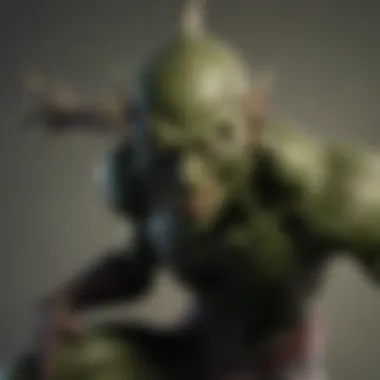
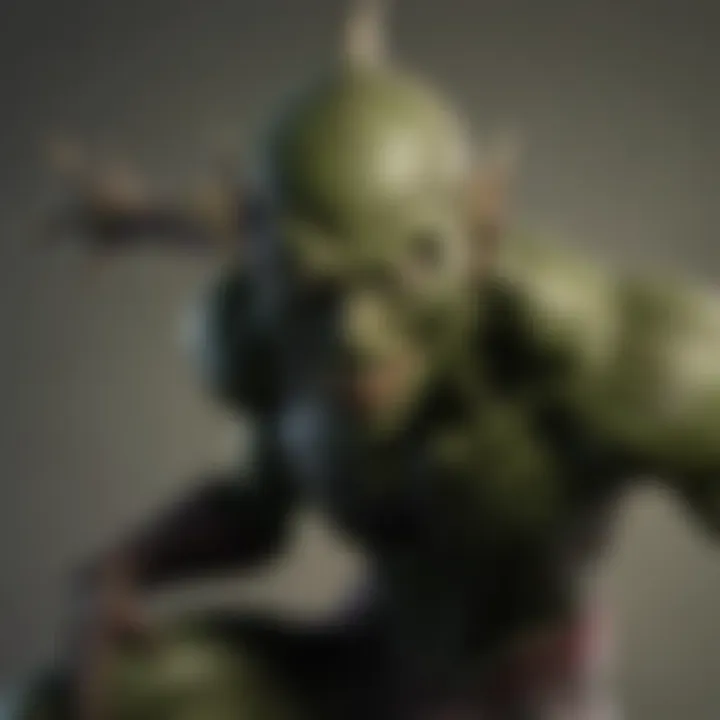
This storyline marks a significant turning point in Spider-Man's history. The death of Gwen Stacy is not only a pivotal moment for Peter Parker, but it also solidifies the Green Goblin’s status as one of the most dangerous villains. This event explores themes of love, loss, and the consequences of power. The brutality of the Goblin's actions shocks the audience and has a lasting effect on Spider-Man's character.
The choices made during this arc illustrate the psychological battles within Norman Osborn. As the Green Goblin, Osborn transforms from a troubled businessman into a vial villain. Readers see the depth of his character through this act of violence. The emotional ramifications of Gwen’s death haunt Spider-Man and drive many of his future choices.
Green Goblin's Return in the 90s
The 1990s brought a resurgence of interest in the Green Goblin, especially with the introduction of new story arcs that redefined his character. Here, the Goblin becomes a symbol of chaos and unpredictability in the face of growing responsibilities for Peter Parker. This era helps to frame Norman Osborn not just as a villain, but as a tragic figure struggling with his dual identity.
Writers explored Osborn’s psyche more profoundly, showcasing his struggle with mental illness and addiction. The return of the Green Goblin adds layers of complexity to the narrative, challenging Spider-Man’s ethics. It compels readers to look beyond the traditional hero-villain dichotomy.
The Clone Saga and Its Impact
The Clone Saga is a controversial period in Spider-Man's history, but it undeniably shapes the legacy of the Green Goblin. During this time, various versions of familiar characters emerge, forcing readers to reconsider who they thought they knew. The introduction of Ben Reilly, the Scarlet Spider, brings a new light to previous conflicts, including those with the Green Goblin.
This story arc adds depth to normative themes of identity and existence. The Green Goblin, in this context, embodies chaos amidst uncertainty. This era allows for new explorations of his character while keeping his roots intact. The saga takes risks, leading to conversations about legacy and reinvention while retaining the essence of the original Green Goblin narrative.
Ultimately, these story arcs provide critical insight into the Green Goblin's character development. They illustrate the complexities and nuances of his role in the Spider-Man story, offering a compelling portrayal of villainy that resonates within the broader context of comic book literature.
"In comics, the dual nature of characters often reflects deeper themes, and the Green Goblin is a prime example of this intricate storytelling."
These arcs are a testament to the art of character building in comics, offering a layered approach that encourages discussion and reflection among fans.
Character Analysis of Norman Osborn
Norman Osborn is one of the most complex characters in the Spider-Man universe. His character serves not only as a formidable foe to Spider-Man but also as a lens to explore deeper themes of power, madness, and familial relationships. Analyzing Norman Osborn requires a look at his psychological profile and the dynamics within his family. These elements are crucial for understanding his motivations and the impact he has on other characters, particularly his son, Harry Osborn.
Psychological Profile
Norman Osborn's psychological makeup is essential for a comprehensive understanding of his character. He embodies a duality that makes him unpredictable and dangerous. On one hand, he is a brilliant businessman and scientist with a strong ambition for success. On the other hand, he harbors deep insecurities and an overwhelming desire for validation.
His transformation into the Green Goblin represents this fractured psyche, as he grapples with his own sense of worth and the darker aspects of his personality. The psychological instability often displayed in his character can be traced back to numerous factors, such as childhood experiences, societal expectations, and self-imposed pressures. This tumultuous inner life crucially affects his relationships with others, particularly Spider-Man.
"Norman Osborn is a reflection of the uncertain nature of human ambition and the consequences it bears."
Osborn's mental health issues include episodes of violent behavior and paranoia. These elements contribute to unpredictable actions, particularly when his alter ego, the Green Goblin, takes charge. Understanding this psychological complexity enhances comprehension of the character's motives and the stakes involved in his conflicts.
Father-Son Dynamics with Harry Osborn
The relationship between Norman and his son Harry Osborn is fraught with tension and expectations. This dynamic is pivotal in the narrative, adding layers to both characters. Norman's high expectations create pressure on Harry, shaping his identity and motivations.
Harry often seeks his father’s approval, which complicates his own moral compass. On one end, he desires to live up to his father’s legacy; on another, he questions the very path his father has taken. This internal conflict makes Harry a tragic figure, often oscillating between being an ally to Peter Parker and confronting his father’s darker tendencies.
Norman’s influence on Harry is twofold. He fosters ambition but also sows seeds of instability in Harry's life. As Harry is drawn into the Spider-Man conflict, he finds himself repeating patterns showcased by his father. In essence, Norman is both a mentor and a cautionary tale, illustrating the potential perils of unchecked ambition and the father’s role in shaping a son’s trajectory.
The interplay of their characters enriches the narrative, showing how personal tragedy impacts both Norman and Harry. This father-son dynamic is not just a personal story; it symbolizes larger themes of legacy, expectation, and the cyclical nature of good and evil within the Spider-Man lore.
Alternate Versions of Green Goblin
The exploration of alternate versions of Green Goblin is significant in understanding the character's impact within the broader Spider-Man universe. Each version presents new facets of Norman Osborn's persona and offers different storytelling avenues that enrich the mythos around Spider-Man. These variations showcase the creative flexibility of comic book narratives, allowing writers and artists to reinterpret the character for new audiences and contexts. Moreover, they reflect changing cultural trends while maintaining core themes that resonate across different platforms.
Ultimate Universe Perspectives
In the Ultimate Universe, a modern reimagining of classic characters, Green Goblin takes on a more grotesque form. This version of Norman Osborn is depicted as a product of misguided scientific experimentation, a theme that resonates with contemporary anxieties about technology and ethics. The character is more monstrous, both physically and mentally. Through the Ultimate Green Goblin, writers examine the consequences of unchecked ambition and the pitfalls of transformative technologies.
Additionally, the Ultimate Universe contextualizes Green Goblin’s relationship with Spider-Man in fresh ways. For example, the emotional stakes are higher as Norman’s rampage directly affects Peter Parker's life, complicating their dynamic into something more personal. This alternate Green Goblin epitomizes the struggle between power and responsibility, a core theme in Spider-Man lore.
The Green Goblin in Spider-Verse
The Spider-Verse concept expands upon the multiverse idea, introducing multiple versions of Green Goblin. In this framework, each incarnation has unique attributes, motivations, and styles. For example, the variant seen in the Spider-Gwen series diverges significantly from the traditional depiction. This diversity allows for richer narratives and character interactions, as various Goblins confront their Spider counterparts.
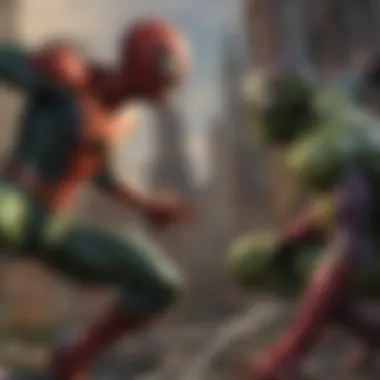
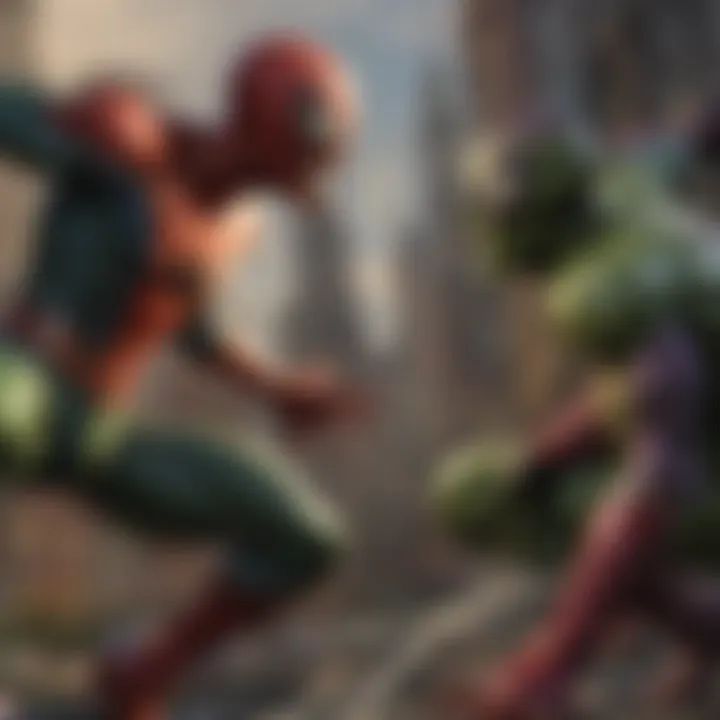
A key aspect of the Spider-Verse is its ability to mix humor with serious undertones. While some versions of Green Goblin retain their menacing traits, others are reimagined in a more comedic light, adding layers of complexity. This juxtaposition invites readers to reconsider their perceptions of heroism and villainy.
Moreover, the Spider-Verse solidifies Green Goblin's role as a catalyst for conflict between different Spider-People, highlighting how his character embodies the theme of duality and choice across realities.
"The multiverse provides a playground for new interpretations of familiar characters, pushing the boundaries of creativity."
By examining alternate versions of Green Goblin, we engage with the character's enduring legacy while appreciating the innovation that reinvention brings to comic book storytelling.
Visual Representation of Green Goblin
The visual representation of Green Goblin is a crucial aspect of his narrative and character development. This section aims to unpack how the depiction of this character has evolved over time and how it has influenced public perception. The evolution of his design not only aligns with comic book trends but also reflects thematic elements and emotional undercurrents of the stories in which he appears.
Artistic Evolution in Comics
The artistic evolution of Green Goblin can be traced back to his first appearance in Amazing Spider-Man #14 in 1964. Initially, his look was characterized by a goblin-like costume with a menacing face, which symbolized chaos and villainy. Over the decades, artists such as John Romita Sr. and Todd McFarlane have contributed to defining his image, each adding their own unique flair. This shift in artistry often coincides with the thematic elements being explored during different eras.
For instance, during the 1980s, a more muscular and menacing version of Green Goblin emerged, often tying his appearance to stories focused on power and madness. In later years, his look has been modernized, reflecting contemporary comic styles and the changing expectations of audiences. This visual evolution illustrates the character’s adaptability and the artists' desire to keep him relevant.
Adaptation in Animated Series
In animated series, the visual portrayal of Green Goblin has fluctuated, demonstrating how adaptations can reshape character interpretation. Shows like Spider-Man: The Animated Series from the 1990s introduced him to a wider audience. Here, his design maintained the traditional elements but also included more expressive features, allowing for deeper emotional storytelling.
More recently, series such as Ultimate Spider-Man opted for a sleeker, more streamlined version that appealed to younger viewers, showcasing how visual representation can adapt to different target demographics while still maintaining the essence of the character.
Cinematic Portrayals
Cinematic portrayals of Green Goblin have significantly impacted public perception. In Sam Raimi's Spider-Man (2002), Willem Dafoe's embodiment of the character is noted for its psychopathological undertones. The design choice of the glider and the iconic mask has become iconic. This portrayal balanced elements of humor, menace, and tragedy, elevating the Green Goblin beyond a simple villain trope.
Later films, such as The Amazing Spider-Man 2, presented the Green Goblin differently, integrating tech and modern aesthetics. This shows how filmmakers continuously explore visual representation, keeping the character alive in the audience's mind while aligning with contemporary cinematic trends.
Thematic Elements Explored
In exploring the thematic elements of the Green Goblin comics, we uncover layers of narrative that enrich the character's depth. These themes are not only crucial for understanding the Green Goblin himself but also provide insight into the complex dynamics of the Spider-Man universe. Themes of greed, power, and the duality of human nature play pivotal roles in shaping the conflicts and moral questions faced by the characters involved.
Thematic elements in comics often serve as reflections of society. Through the Green Goblin, writers examine issues like ambition, corruption, and the consequences of wielding power unethically. Such explorations resonate across generations, making it relevant for today's readers.
"Understanding the themes in comics allows readers to grasp the moral complexities at play, often mirroring real-life struggles."
Themes of Greed and Power
Greed and power are intricately woven into the fabric of the Green Goblin's narrative. Norman Osborn, the man behind the mask, embodies the dangers of unchecked ambition. His desire for power drives him to make choices that lead to chaos, not only for himself but for those around him.
Central to Green Goblin's character is the idea that power can corrupt. Norman's transformation into the Green Goblin acts as a metaphor for how ambition can be a double-edged sword. Initially, he seeks to propel himself into positions of authority and control, yet his methods lead to personal and social ruin. This represents a cautionary tale about the consequences of prioritizing power over ethics.
Additionally, the theme of greed manifests in various story arcs. Norman's willingness to sacrifice his relationships, including his son Harry, highlights the emotional costs of his avarice.
- Key Points:
- Greed as a driving force for the Green Goblin.
- Power leading to corruption and moral decay.
- Personal relationships sacrificed for ambition.
Duality of Human Nature
The exploration of duality plays a significant role in understanding the Green Goblin's complexity. Norman Osborn represents the struggle within humanity — the juxtaposition of good versus evil. This duality creates a compelling character whose motives switch between villainy and moments of vulnerability.
Norman's life as a businessman conflicts sharply with his identity as the Green Goblin. This internal battle creates fascinating contrasts and depth, allowing readers to see both the monster and the man. His dual nature elicits a range of emotions from the audience, encouraging sympathy even for a character labeled as a villain.
- Critical Aspects:
- Norman Osborn's internal conflict as a narrative device.
- The Green Goblin as a representation of our darker sides.
- Reader empathy resulting from complex character traits.
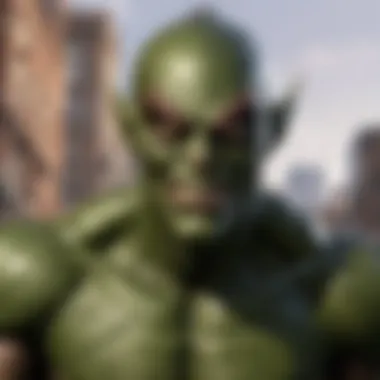
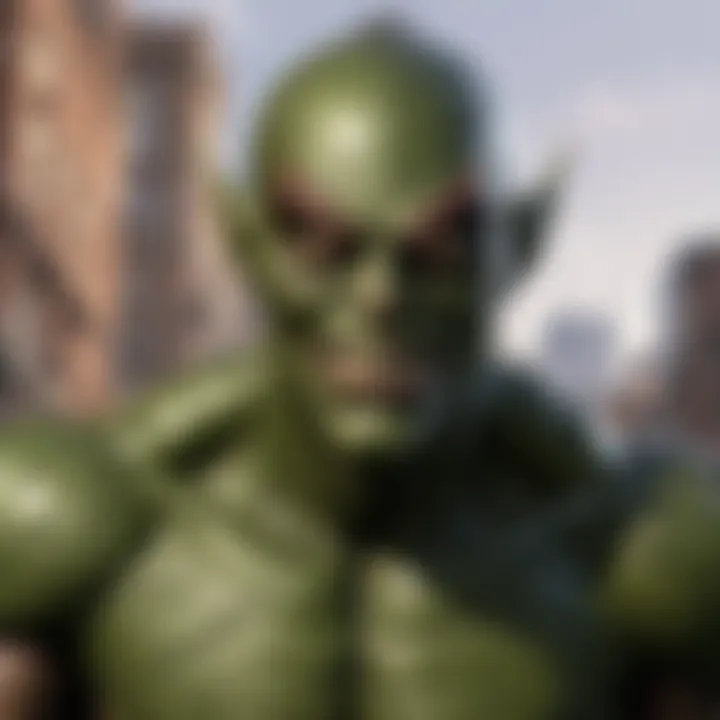
In summary, the themes of greed, power, and the duality of human nature within the Green Goblin comics contribute significantly to their narrative richness. By navigating these thematic landscapes, readers can better appreciate the intricate storytelling and character development that defines this infamous foe of Spider-Man.
Green Goblin's Impact on Spider-Man's Character
Green Goblin is not just another villain in Spider-Man's rogues' gallery; he is a defining force in the narrative landscape of Spider-Man comics. The relationship between Green Goblin and Spider-Man, primarily Peter Parker, shapes the psychological and moral fabric of the stories. Their confrontations impact both characters on multiple levels, highlighting essential themes of trust, betrayal, and personal sacrifice.
The ever-evolving conflict between them is rich with significance. It marks turning points in Spider-Man's character development, showcasing how the stakes escalate as they battle for their ideals. Green Goblin's actions often push Spider-Man into corners that test his resilience and ethics. This dynamic illustrates not just the typical hero-villain rapport but delves deeper into the fears and vulnerabilities that each character harbors.
Defining Moments in Their Conflict
There have been numerous defining moments in the conflict between Green Goblin and Spider-Man. One pivotal moment occurs during "The Night Gwen Stacy Died," which is a landmark issue that significantly alters Spider-Man's emotional trajectory. In this issue, the death of Gwen Stacy at the hands of Green Goblin serves as a catalyst for Peter Parker's realization of the true costs of his heroism. It represents a transition where innocence is shattered, forever changing how he views his role as a protector.
Furthermore, the portrayal of Green Goblin as both a foe and a reflection of Peter’s own fears adds layers to their encounters. Norman Osborn, as the Green Goblin, embodies what Parker could become if he loses control of his power and responsibility. Their battles thus showcase the struggle of conquering not only external threats but also internal demons. This multifaceted conflict is deeply engaging, prompting readers to explore complex emotional and psychological themes.
The Role of Personal Tragedy
Personal tragedy heavily weighs on the narratives involving Green Goblin and Spider-Man. For Peter Parker, the losses he experiences—such as Gwen Stacy—are profound. Green Goblin, on the other hand, embodies tragedy through Norman Osborn's dual life and his battle with mental illness. This interplay of personal trauma adds depth to their characterizations.
The tragedies experienced by both characters do not merely serve as plot devices; rather, they offer insights into their motivations. For Spider-Man, these tragedies fuel his determination to protect others, to ensure that no one else suffers as he has. For Green Goblin, tragedy manifests as a drive for power and revenge, seeking a twisted sense of control over a world that feels chaotic and unmanageable.
This contrast leads to an ongoing thematic exploration of how personal tragedy shapes one's identity and choices. By contrasting the impact of these tragedies, writers provide a canvas that reveals the complexities of being a hero versus a villain. Both characters resonate with readers precisely because their journeys are marked by pain, loss, and the pursuit of meaning within their tumultuous lives.
"The Green Goblin's unique relationship with Spider-Man is what's truly potent—it's a dance of shadows where each reveals the other."
The impact of Green Goblin on Spider-Man's character is profound. Their conflicts, laced with personal tragedy, allow for deeper exploration of themes that engage Spider-Man enthusiasts across generations. As they clash, it emphasizes their psychological struggles and the ever-present concept of choice in defining one's path, illustrating that every battle fought has consequences that ripple through the very essence of who they are.
Green Goblin in Popular Culture
The umbrella of popular culture encompasses a wide array of media and consumer products that keep characters like the Green Goblin relevant and dynamic. This section delves into the significance of the Green Goblin beyond comics, emphasizing how his presence affects merchandising and fan interpretations, as well as his representation in various media. The character's essence not only captivates audiences but also generates economic and cultural dialogue.
Merchandising and Fan Interpretations
Merchandising plays a pivotal role in defining the public image of a character like the Green Goblin. Various products ranging from toys to clothing feature this iconic villain, facilitating a deeper connection between fans and the character. Figures such as the action figures produced by Hasbro and collectibles by Funko have become essential for fans. This kind of engagement offers fans an interactive experience and a sense of ownership over their favorite character.
Fans contribute to the Green Goblin fandom in diverse ways. Online platforms like Reddit and fan art on social media showcase interpretations of this character. They create a rich tapestry of creativity that reinforces his cultural presence. Fans often engage in discussions about his capabilities and relationships, expanding the narrative surrounding Green Goblin from the pages of comic books into a broader stigma of interest.
References in Other Media
The Green Goblin transcends comic books, appearing in various media formats that further explore his character. For example, in animated series like "Spider-Man: The Animated Series" and "Ultimate Spider-Man," his portrayal shifts slightly but remains recognizable. This adaptability allows the character to reach varied audiences, introducing new generations to the conflict and narrative he brings.
In cinema, the Green Goblin has been brought to life by actors such as Willem Dafoe and James Franco in the Sam Raimi Spider-Man trilogy. Their performances introduce layers of complexity to Osborn's character. Moreover, films enhance the character's tragic elements, making it possible for viewers to understand and empathize with his motivations.
"The Green Goblin serves not just as a villain but as a reflection of Peter Parker's own struggles, mirroring the complexities of personal conflict."
Media adaptations play a crucial role in shaping the character's narrative. For instance, the 2002 film "Spider-Man" solidified the Green Goblin as a significant player in superhero cinema. Through these platforms, the Green Goblin's legacy continues to evolve, ensuring his position as an enduring symbol of conflict, power, and tragedy.
Closure and Future of Green Goblin
The examination of the Green Goblin's character and impact on Spider-Man's universe reveals significant themes that resonate with audiences. Understanding the Green Goblin's legacy is crucial not only as a character study but also as a lens through which we can evaluate broader narratives in comic book history. The Green Goblin stands as one of Spider-Man's most formidable foes, embodying deeper psychological complexities and personal conflicts that extend beyond mere villainy.
Enduring Legacy in the Spider-Man Mythos
The Green Goblin's legacy within the Spider-Man mythos is profound. He serves as a symbol of chaos, mischief, and psychological struggle. By exploring his character, readers are introduced to themes of duality and the blurred lines between heroism and villainy. Norman Osborn's transformation into the Green Goblin represents the potential for darkness within all individuals, making him a compelling character for analysis.
Moreover, the Green Goblin's influence extends beyond his immediate interactions with Spider-Man. He has shaped the overarching narrative arcs within the Spider-Man comics, providing a catalyst for major events. For instance, his role in the death of Gwen Stacy changed Spider-Man's trajectory fundamentally, emphasizing the stakes involved in their conflict. This event remains crucial in understanding Spider-Man's motivations and fears.
The presence of the Green Goblin in various adaptations, from animated series to films, confirms his enduring relevance. He is frequently depicted as a benchmark against which other villains are measured, reinforcing his position as a quintessential antagonist in superhero lore.
Potential Directions in Upcoming Storylines
Looking ahead, the future of Green Goblin in comics is ripe with potential for further exploration and reinvention. With ongoing development in the Spider-Man universe, there is an opportunity to delve deeper into Norman Osborn's psyche. Writers might explore his struggle with identity and morality, especially considering the complexities of fatherhood and legacy as seen in his relationship with Harry Osborn. This dynamic could be magnified, particularly as younger generations of readers become more invested in psychological narratives.
Additionally, the possibility of new story arcs that bring the Green Goblin into confrontation with not only Spider-Man but also new characters could introduce fresh dynamics. This can amplify themes of redemption or the cyclical nature of violence in superhero stories.
In summary, the Green Goblin remains a pivotal character in the Spider-Man universe. His legacy is intertwined with more than just battles and confrontations; it is about humanizing the villain and reflecting societal issues. The potential directions for future storylines promise to keep the character relevant, allowing him to evolve while maintaining his core identity.







